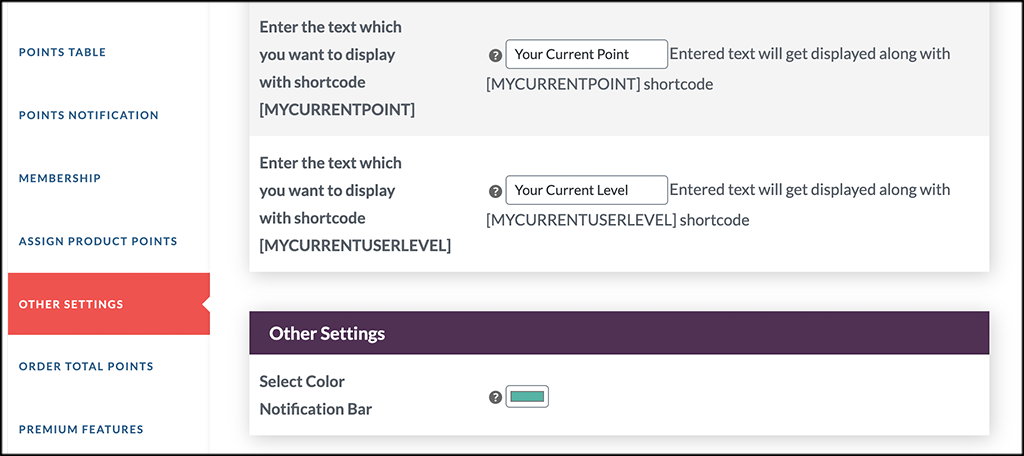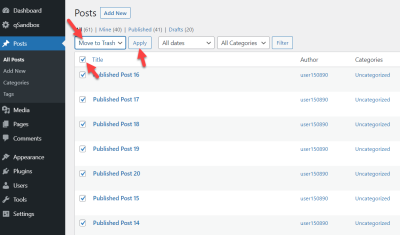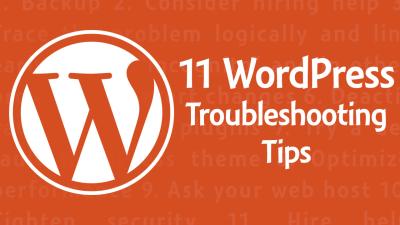Hey there! If you’re running a WordPress site, you probably know that encouraging users to recommend your content or register can be a game-changer. That’s where user reward programs come into play. These programs are designed to motivate visitors to take specific actions—like signing up, sharing your content, or referring friends—by offering them something in return. Think of it as a friendly nudge that turns casual visitors into engaged community members. Implementing these reward systems can boost your site’s traffic, enhance user loyalty, and create a vibrant community that keeps coming back for more.
Benefits of Reward Systems for User Engagement and Growth

Now, let’s talk about why setting up a reward system is such a smart move. First off, it significantly increases user engagement. When visitors know they can earn rewards—be it discounts, exclusive content, or recognition—they’re more likely to participate actively. This creates a more lively and interactive environment on your site.
Another big perk is growth through word-of-mouth. Rewards for recommendations encourage users to share your site with friends and family, expanding your reach organically. Plus, a well-designed reward system can foster user loyalty, making people more likely to return because they feel valued and appreciated.
Here are some key benefits summarized:
- Boosts user engagement: Keeps visitors interested and involved.
- Encourages sharing and referrals: Brings in new users effortlessly.
- Builds loyalty: Turns casual visitors into loyal customers or community members.
- Increases site traffic: More activity means higher visibility in search engines.
- Enhances brand reputation: A rewarding experience makes your brand more attractive.
All these benefits combine to create a thriving, active community around your WordPress site, helping you grow faster and stronger. So, setting up effective reward programs isn’t just a nice-to-have—it’s a must for serious website owners looking to maximize engagement and expand their reach.
3. Setting Up a Reward System on Your WordPress Site
Implementing a reward system on your WordPress site is a fantastic way to motivate your users to recommend your services or products and to register more actively. But how do you get started? The key is to design a system that’s simple to understand, easy to participate in, and genuinely rewarding. Here’s a step-by-step guide to help you set up an effective reward system:
Define Your Goals and Rewards
First things first, decide what you want to achieve. Do you want more registrations, increased referrals, or both? Once you’re clear, determine what kind of rewards will resonate with your audience. Common options include:
- Discount codes or coupons
- Free products or services
- Exclusive access to new features or content
- Points systems that users can redeem for rewards
Make sure your rewards are appealing and aligned with your brand. For example, if you run an online course platform, offering free courses or premium content can be highly motivating.
Create Clear Rules and Tracking
Next, establish the rules for earning rewards. How many friends does a user need to refer? What qualifies as a successful registration? Clear rules prevent confusion and build trust. Also, set up a reliable tracking system—most reward plugins or custom setups will handle this, but it’s good to keep records of referrals and redemptions.
Integrate the Reward System with Your Website
This is where the technical setup comes in. You’ll want to embed referral links, tracking codes, or forms that automatically count referrals. Many WordPress plugins can facilitate this process, automating the distribution of rewards once criteria are met. Ensure the process is transparent, so users see their progress and are motivated to continue participating.
Promote Your Program
Once everything is in place, don’t forget to shout about it! Use email campaigns, social media, and your website banners to inform your audience about the rewards. The more visible and straightforward you make the program, the more participants you’ll attract.
Monitor and Optimize
Finally, keep an eye on how your reward system performs. Track metrics like referral rates, registration boosts, and user engagement. Based on the data, tweak your rewards or rules to maximize participation and ensure your program stays fresh and exciting.
4. Popular Plugins for User Rewards and Referral Programs
If you’re looking to add a rewards or referral system to your WordPress site without reinventing the wheel, plugins are your best friends. They simplify setup, automate tracking, and often come with customizable options. Here are some of the most popular and reliable plugins you should consider:
1. AffiliateWP
One of the most robust affiliate marketing plugins available, AffiliateWP is perfect for creating a comprehensive referral program. It integrates seamlessly with many eCommerce platforms like WooCommerce, Easy Digital Downloads, and more. Features include:
- Easy referral link generation
- Referral tracking and reporting
- Referral commissions management
- Extensions for reward management
It’s a premium plugin, but its reliability and features make it worth the investment if you’re serious about a scalable program.
2. ReferralCandy for WooCommerce
If you run an online store using WooCommerce, ReferralCandy is a popular choice. It focuses on word-of-mouth growth by rewarding customers who refer friends. Features include:
- Automated reward distribution via email
- Customizable referral programs
- Integration with popular email marketing tools
This plugin makes it easy to set up a referral program that encourages sharing and repeat purchases.
3. WP Referral Program
This plugin offers a straightforward way to create referral programs tailored to your needs. It supports:
- Multiple reward types (points, discounts, etc.)
- Referral tracking and management
- Referral link generation
It’s user-friendly and ideal for small to medium-sized websites looking for quick setup and customization.
4. BadgeOS
If gamification appeals to your audience, BadgeOS is a great choice. It lets you create achievement systems, badges, and points that can be awarded for registrations, referrals, or other actions. Features include:
- Points and badge management
- Achievements for user engagement
- Integration with other plugins and tools
Using BadgeOS, you can motivate users with visual rewards and recognition, adding an extra layer of engagement to your program.
Final Thoughts
Choosing the right plugin depends on your specific goals, technical comfort level, and budget. Whether you want a simple points system or a full-fledged affiliate management platform, these tools can help you implement a rewarding experience that encourages users to recommend your site and register more actively. Remember, the key to success is transparency, simplicity, and making your users feel genuinely appreciated for their efforts!
5. Configuring Rewards for User Recommendations and Registrations
Setting up a reward system that encourages users to recommend your site or register is a fantastic way to grow your community organically. But to do it effectively, you need to carefully configure how these rewards work within your WordPress site. Let’s walk through some practical steps to get this done smoothly.
First, you’ll want to decide what kinds of rewards you’ll offer. Common options include:
- Discount codes or coupons
- Free products or services
- Points or credits in a loyalty program
- Exclusive access or content
Once you’ve decided on your rewards, the next step is to set up the technical side. Many WordPress plugins like AffiliateWP, ReferralCandy, or WPForms with add-ons can help you automate this process. Here’s a quick overview:
Step-by-step Configuration:
- Install and Activate a Suitable Plugin: Choose one that supports referral tracking and rewards management.
- Define the Reward Structure: Set parameters such as reward amount, eligible actions (recommendation or registration), and conditions (e.g., only after a successful purchase).
- Create Referral or Registration Forms: Use plugins like WPForms or Gravity Forms to embed forms with referral tracking capabilities.
- Set Up Referral Links or Codes: Provide users with unique links or codes they can share. When new users register or make a purchase via these links, the system recognizes the source.
- Automate Reward Distribution: Configure your plugin to automatically send rewards once the criteria are met, such as after a new user registration or purchase confirmation.
Additionally, make sure to test your setup thoroughly. Register as a user, recommend a friend, and verify that the reward triggers correctly. Clear instructions and transparent processes help users trust and participate eagerly.
Don’t forget to keep your reward thresholds and rules transparent. Users should know exactly what they need to do to earn rewards, which increases motivation and reduces confusion.
6. Best Practices for Motivating Users to Participate
Getting users to actively recommend your site or register isn’t just about offering rewards — it’s about creating a culture of engagement and trust. Here are some tried-and-true best practices to motivate your audience effectively:
1. Make Rewards Attractive and Relevant
Offer rewards that your audience truly values. If your community loves discounts, focus on coupons. If they’re more into exclusive content, tailor your rewards accordingly. The key is aligning incentives with what motivates your users.
2. Communicate Clearly and Transparently
Be upfront about how the referral or registration process works and what rewards are on offer. Use simple language and visuals to explain the steps. When users understand exactly what they’ll get, they’re more likely to participate.
3. Simplify the Process
The easier it is to refer someone or register, the higher your participation rates. Use user-friendly forms, easy-to-share referral links, and minimal steps. Avoid complex procedures that might discourage users from taking action.
4. Recognize and Appreciate Your Users
Show appreciation publicly or privately. Send personalized thank-you messages, feature top referrers on your site, or offer bonus rewards for active participants. Feeling valued encourages continued engagement.
5. Foster a Community Atmosphere
Encourage users to share ideas, success stories, or tips within your community. When users see others benefiting and participating, social proof can be a powerful motivator.
6. Keep the Momentum Going
Run periodic promotions or challenges to keep excitement alive. For example, “Refer 5 friends this month and get a special bonus!” Limited-time offers create urgency and boost participation.
7. Provide Feedback and Updates
Keep users informed about their progress, rewards earned, and upcoming opportunities. Regular updates help maintain interest and motivate users to stay engaged over the long term.
By combining attractive rewards with clear communication, ease of participation, and recognition, you create an environment where users feel motivated and appreciated. This not only boosts your current campaign but also builds lasting loyalty and advocacy for your brand.
7. Tracking and Managing User Rewards Effectively
Now that you’ve set up your reward system for recommendations and registrations, the next big step is ensuring you can track and manage those rewards smoothly. Without proper management, even the best incentive ideas can fall flat or become a nightmare to handle. So, how do you keep everything running like clockwork?
First, it’s crucial to use a reliable plugin or integrate a system that offers detailed tracking features. Many WordPress reward plugins come with built-in dashboards where you can see who earned rewards, how many they’ve accumulated, and which actions triggered those rewards. This transparency helps you identify your top referrers and also catch any potential misuse.
Here are some tips for effective tracking and management:
- Automate reward calculations: Use plugins that automatically assign points or rewards based on user actions. This reduces manual errors and saves time.
- Set clear redemption rules: Define how and when users can redeem their rewards. For example, can they cash out points after reaching a certain threshold? Make these rules transparent.
- Regularly review reports: Schedule routine checks of your reward logs to monitor activity, identify irregularities, and measure program success.
- Use notifications: Keep users informed about their reward status with email notifications or dashboard updates. This encourages ongoing participation.
Additionally, consider integrating your reward system with your CRM or email marketing tools. Doing so allows you to segment users based on their activity and reward status, which can inform personalized marketing campaigns and boost engagement.
Lastly, always keep user data secure. Use reputable plugins and ensure your website complies with privacy standards like GDPR. Managing rewards isn’t just about keeping the system running—it’s also about respecting your users’ privacy and trust.
8. Case Studies of Successful Reward Programs on WordPress
Sometimes, the best way to get inspired is to see real-world examples. Here are a few success stories of businesses leveraging WordPress reward programs to grow their community and boost loyalty.
Case Study 1: Eco-Friendly Lifestyle Blog
This blog wanted to encourage readers to share content and register for their newsletter. They used a points-based reward plugin linked to a referral system. Every time a user referred a friend or signed up for their newsletter, they earned points redeemable for eco-friendly products. Within six months:
- Referral increases: 40%
- New registrations: Doubled
- User engagement: Significantly improved with active reward participation
By making rewards tangible and aligned with their brand, they fostered a community of passionate eco-conscious consumers who kept coming back for more.
Case Study 2: Online Educational Platform
This platform aimed to boost course registrations and active participation. They implemented a badge and points system where students earned rewards for completing courses, referring friends, or participating in forums. Rewards included discounts on future courses and exclusive content access. Key results:
- Increased referrals: 35%
- Course completion rate: Improved by 25%
- Repeat customers: Grew steadily over time
By gamifying the learning experience and rewarding engagement, they created a vibrant community that motivated users to stay active and promote the platform.
Case Study 3: Local Retail Store Website
This small business used a referral program integrated into their WordPress site to encourage existing customers to bring in new shoppers. They rewarded referrers with store credit and exclusive discounts. The results:
- Customer base growth: 50% in three months
- Customer retention: Improved significantly
- Social media buzz: Increased shares and mentions
Offering rewards that directly benefit customers—like store credit—made the program highly attractive and easy to promote organically.
These examples show that with the right strategy, reward programs on WordPress can drive engagement, loyalty, and growth. The key is tailoring rewards to your audience’s interests and ensuring your tracking and management systems are spot-on. Ready to craft your own winning reward program? Dive in, experiment, and watch your community thrive!
Conclusion and Tips for Maximizing User Engagement Through Rewards
Rewarding users for recommendations and registrations is a powerful strategy to foster loyalty and encourage active participation on your WordPress site. To maximize the effectiveness of your reward system, it’s essential to implement best practices that resonate with your audience and motivate continued engagement.
Key Tips for Success:
- Personalize Rewards: Tailor incentives based on user preferences and behaviors to make rewards more meaningful.
- Offer Tiered Incentives: Use a tiered system where users earn increasingly valuable rewards for higher levels of engagement, encouraging ongoing participation.
- Use Clear Communication: Clearly outline how users can earn rewards and the benefits they receive. Transparency builds trust and motivation.
- Leverage Gamification: Incorporate gamified elements like badges, leaderboards, or progress bars to make the process engaging and fun.
- Ensure Easy Redemption: Simplify the process for users to claim and use their rewards to prevent frustration and dropout.
- Monitor and Optimize: Regularly analyze your reward program’s performance using analytics tools. Adjust strategies based on what motivates your users most effectively.
| Tip | Benefit |
|---|---|
| Personalization | Increases user motivation and satisfaction |
| Clear Communication | Builds trust and encourages participation |
| Easy Redemption | Reduces frustration, boosting retention |
In conclusion, combining thoughtful reward strategies with consistent engagement efforts can significantly enhance user loyalty, expand your community, and drive sustained growth on your WordPress platform. Continuously refine your approach to keep your users motivated and valued.


